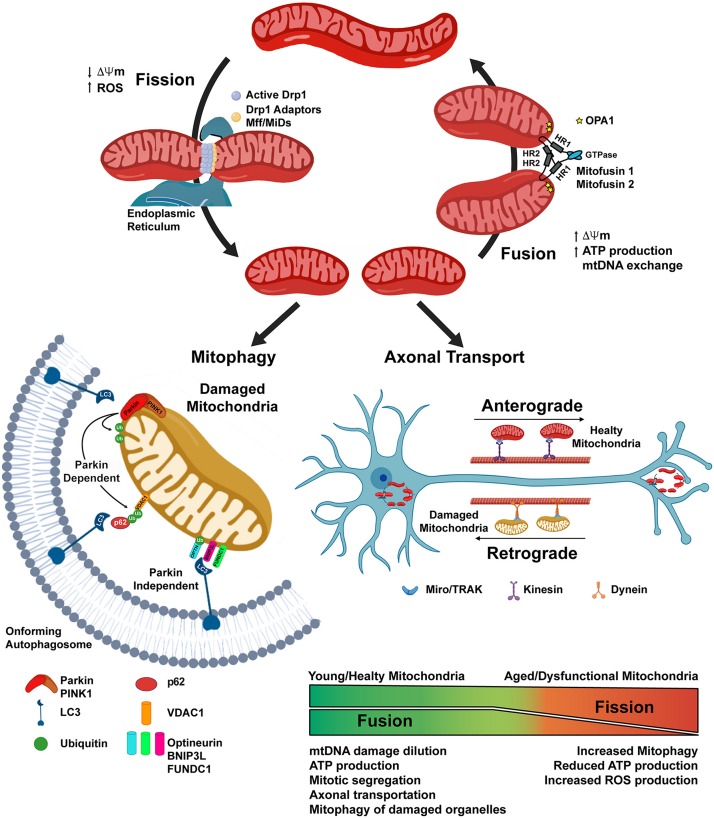FIGURE 2.
Mitochondrial dynamics depends on the balance of Fission and Fusion processes. Mitochondrial fission is initiated through the interaction of mitochondria with the Endoplasmic Reticulum and the actin cytoskeleton. The activation of the Dynamin related protein-1 (Drp1) allows its translocation to the mitochondrial outer membrane, where with the help of the mitochondrial fission factor (Mff) and the mitochondrial dynamics proteins (MiDs), constrains the organelle until it divides into two separate ones. Mitochondrial fusion is dependent on the action of Mitufusin-1 and -2, on the outer mitochondrial membrane (OMM), and of OPA1, on the inner mitochondrial membrane. Fission is not only a physiological event, i.e., allowing the organelles to be transported along axons or correctly segregated in daughter cells during mitosis, but could also be a consequence of mitochondrial damage, such as the loss of the mitochondrial membrane potential (ΔΨm), thus allowing the removal of damaged organelles through the mitophagy process. Parkin-dependent mitophagy requires the PINK1-dependent recruitment of the cytosolic Parkin on the OMM, where it could ubiquitinate mitochondrial resident protein, such as VDAC1. This protein signal is later recognized by the adaptor protein p62 which, through the interaction with LC3 on the membrane of the on-forming autophagosome, delivers the targeted mitochondria to the degradation. In the Parkin-independent mitophagy, the damaged organelle is recognized by LC3 through the interaction with other protein receptors, such as BNIP3L, FUNDC1, Optineurin, localized on the outer mitochondrial membrane.

